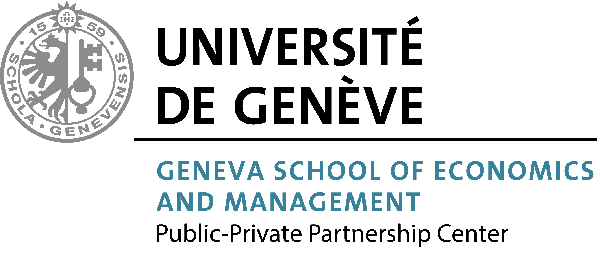Coursera
Below, you will find more information about:
- The coursera MOOC "International Organization Management" and its PPP module taught since 2015 regulary till today.
- The outcome of the coursera PPP exercise: A list of more than 100 PPP examples
- The coursera capstone project on "Challenges in Global Affairs" and the respective e-books with a selection of the top essays (2015 and 2016 cohorts)
(1) The Coursera MOOC "International Organization Management" and its PPP module
An introductory online module on PPPs is part of the coursera course entitled “International Organization Management.” Please click here to access the syllabus. The course is still ongoing and the weekly Course Digest of December 2020 shows a total of 30 145 learners!
The video lecture acknowledges that in view of complex societal problems, many international organizations realize the limitations involved in addressing these problems unilaterally. Consequently, they increasingly collaborate with organizations from the business, government, and civil-society sectors in order to successfully combine their resources in a process of intense interaction and coordination. These PPPs differ from profit-driven contracting-out mechanisms as well as from merely philanthropic, donation-based relationships since the partners are jointly responsible for planning, managing, and implementing the partnership.
This course will give an introduction into this phenomenon:
-Why are PPPs formed and what does this form of collaboration entail?
-What types and differentiators are there?
-What are common challenges in managing these partnerships?
-How can you best design, implement, and review a PPP?
-And what does engaging in PPPs imply for International Organizations?
(2) The PPP Exercise
In our coursera courses in 2013, 2014, and 2015, we asked the participants to briefly describe a PPP of their choice and send us a one-pager. We were delighted to receive many very insightful examples and would like to thank all those who committed to this purely voluntary exercise. While the one pagers will remain confidential, we have created a list with the most cited PPP examples that correspond to our criteria (e.g., also involving actors from the business sector). The list includes more than 100 examples in the areas of health, education, water, and humanitarian relief and indicates the PPPs’ names, objectives, participating partners, focal region, and links for further information.
To access the list, please click here.
Moreover, we asked the participants to discuss the main benefits and challenges that these PPPs involved.
The most common benefits included:
•Leveraging each partner's unique resources / comparative advantage
•Bridging gaps and increasing resource mobilization
•Collaborative spirit's ripple effects
•Multifaceted approach and vision
•Increased outreach and scope
•Increased effectiveness and sustainability
•Opening new markets and development
•Benefiting the partners and beneficiaries
The most common challenges involved:
•Lack of PPP knowledge and experience
•Organizational limitations and constraints
•Asymmetry of power
•Supply-driven approach and lack of community involvement
•Difficult consensus building, governance, and coordination
•Limited time frame and high expectations
•Exclusiveness and civil-society fragmentation
•Corruption and accountability issues
To visit the coursera website please click here.
(3) The Capstone Project on "Challenges in Global Affairs"
The Course:
The Final Project of the Specialization “Challenges in Global Affairs” on Coursera brings together the knowledge and insights learned in three MOOCs: The Changing Global Order (Leiden University), Configuring the World (Leiden University) and International Organizations Management (University of Geneva). The leading instructors of these courses joined forces in order to allow the participants to contribute their creative solutions to the ongoing challenges in international relations in practice.
The instructors of the three courses, Prof. Madeleine Hosli, Prof. Richard Griffiths, and Dr. Lea Stadtler presented serious and highly challenging subjects the students could write about. The course students, which were from 75 different countries, different backgrounds and life experiences, understood and analyzed the assignment in their own ways, creating various interpretations and creative solutions with the aim to apply academic knowledge to challenges in practice.
The assignment:
The assignment purpose was to establish links between the theoretical and academic aspects of an issue to the practical dimension of the issue such as social, economic, political or organizational dimension. The participants were asked to present evidence as well as quantitative and/or qualitative data by appropriate sources for their chosen topic. They needed to determine what was their ideal solution for the problem and analyze the strengths and weaknesses of their answer.
They had to choose between:
1. A bilateral conflict (such as the current tensions between Russia and the ‘West’ about the Ukraine)
2. A challenge to an international organization (such as related to climate change, trade, internet, public health, or even its own functioning / relevancy / governance / partnership strategies etc.)
3. A transnational issue (such as problems associated with transnational capital flows)
An e-book with a selection of the best 15 essays of the 2015 contributions can downloaded here. The e-book with the best essays in 2016 is available here.
